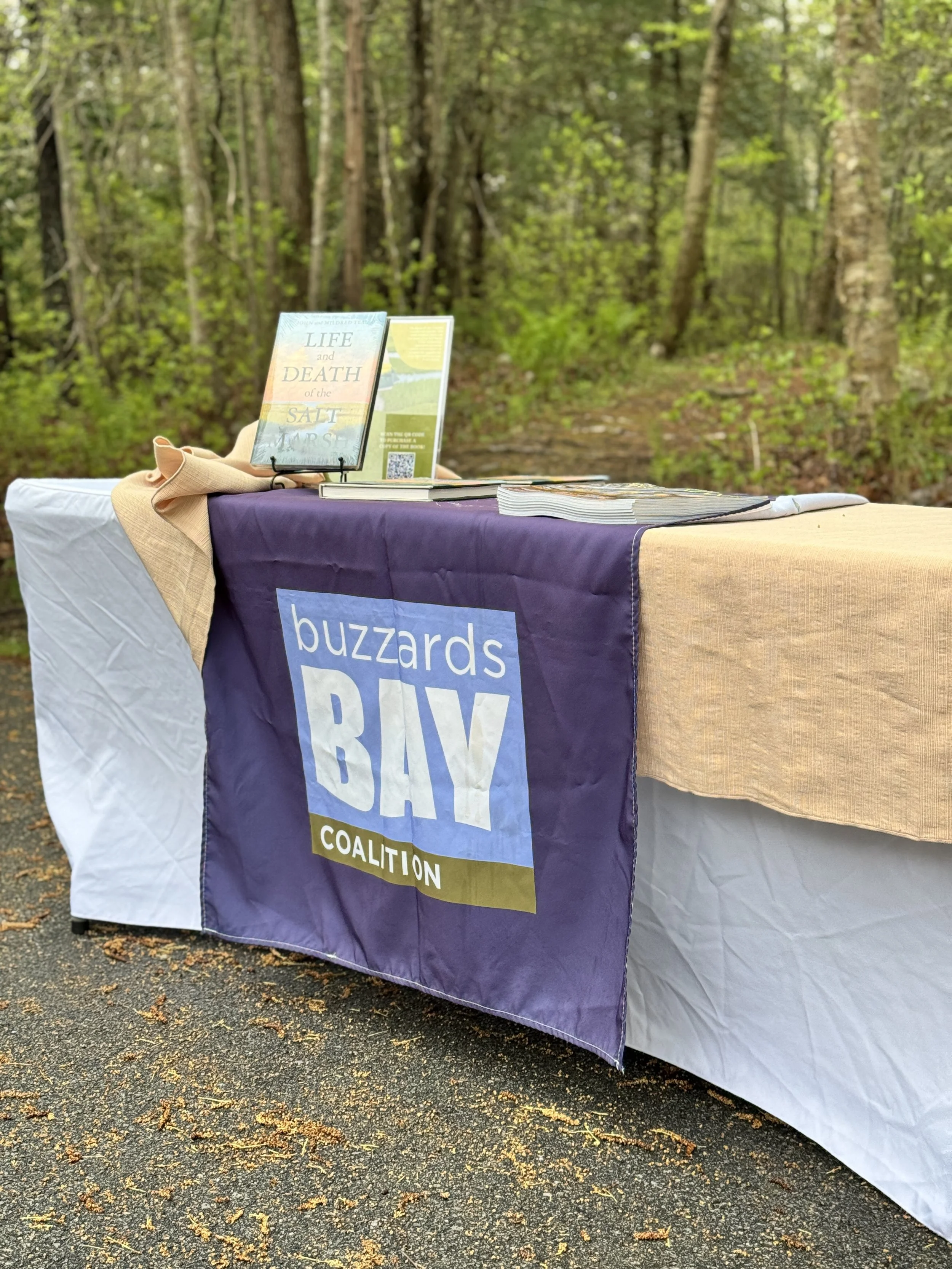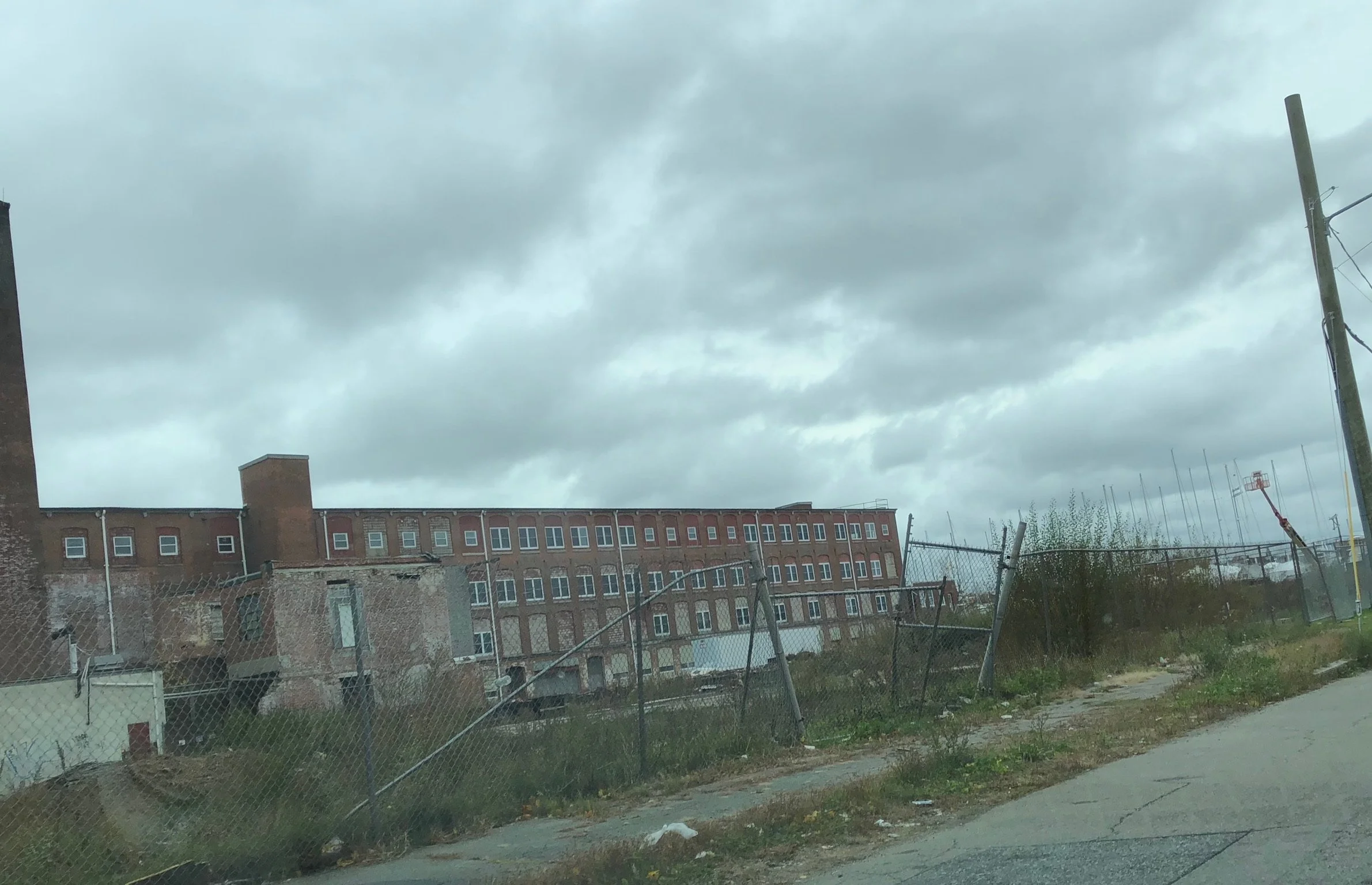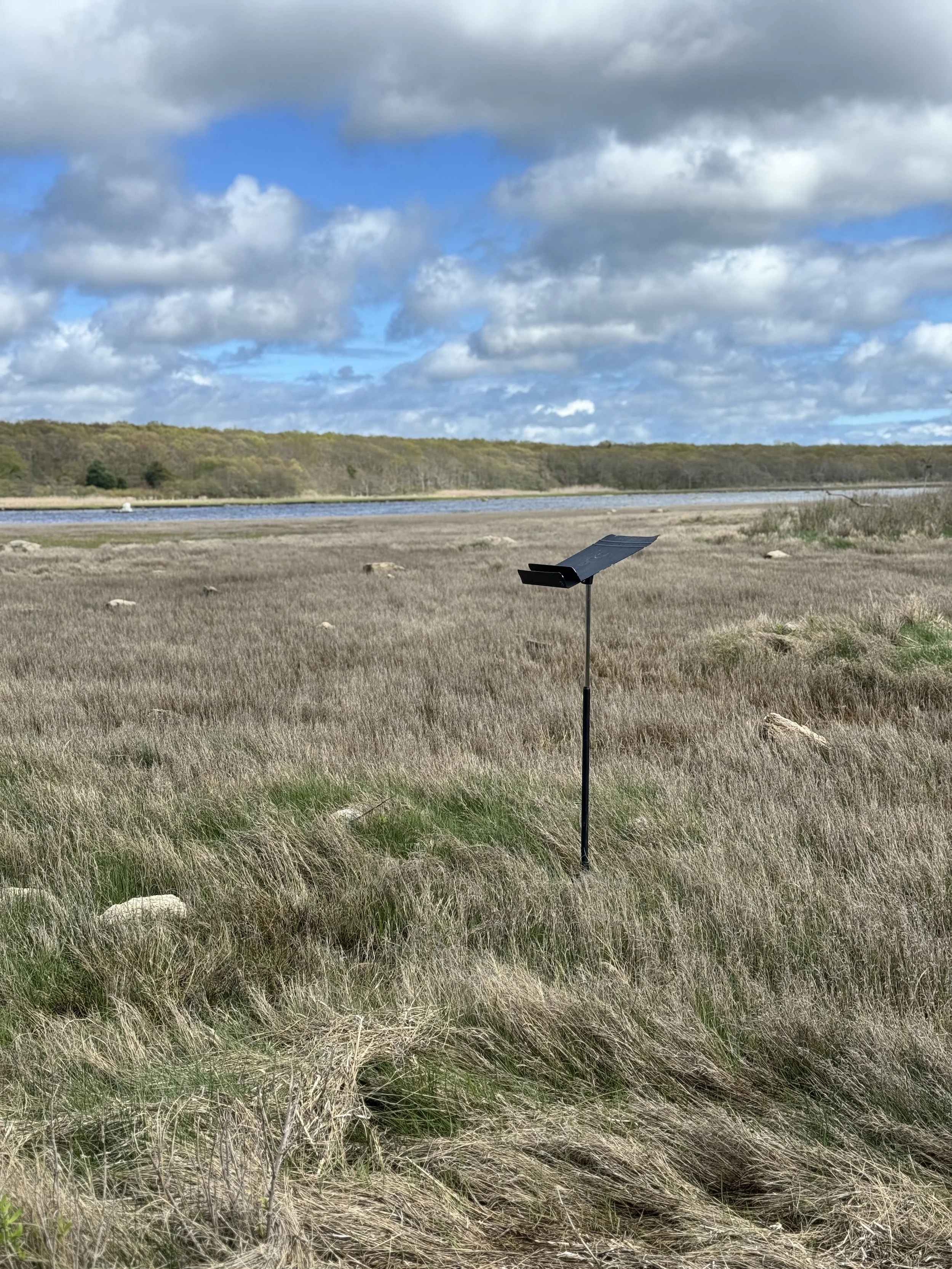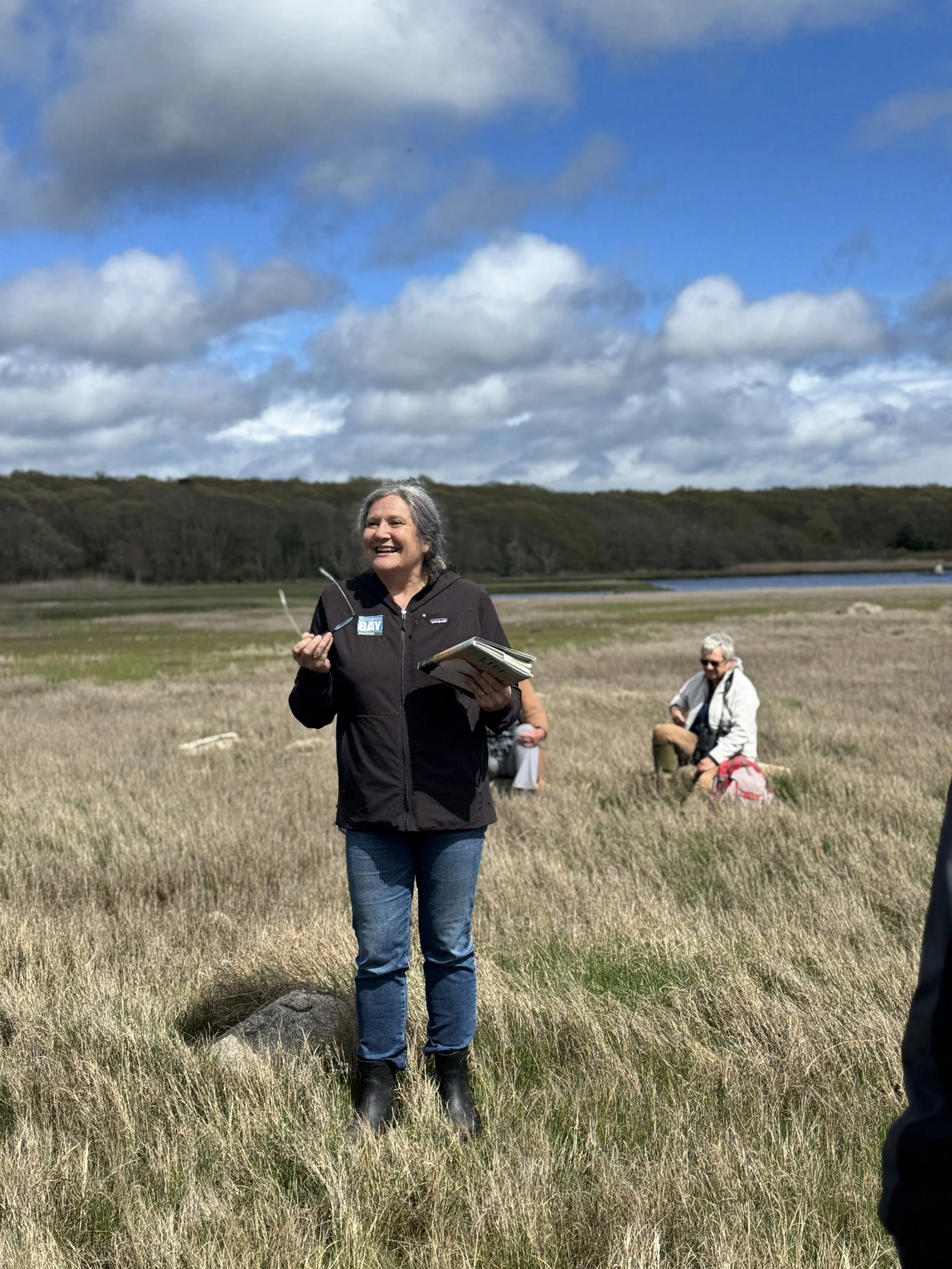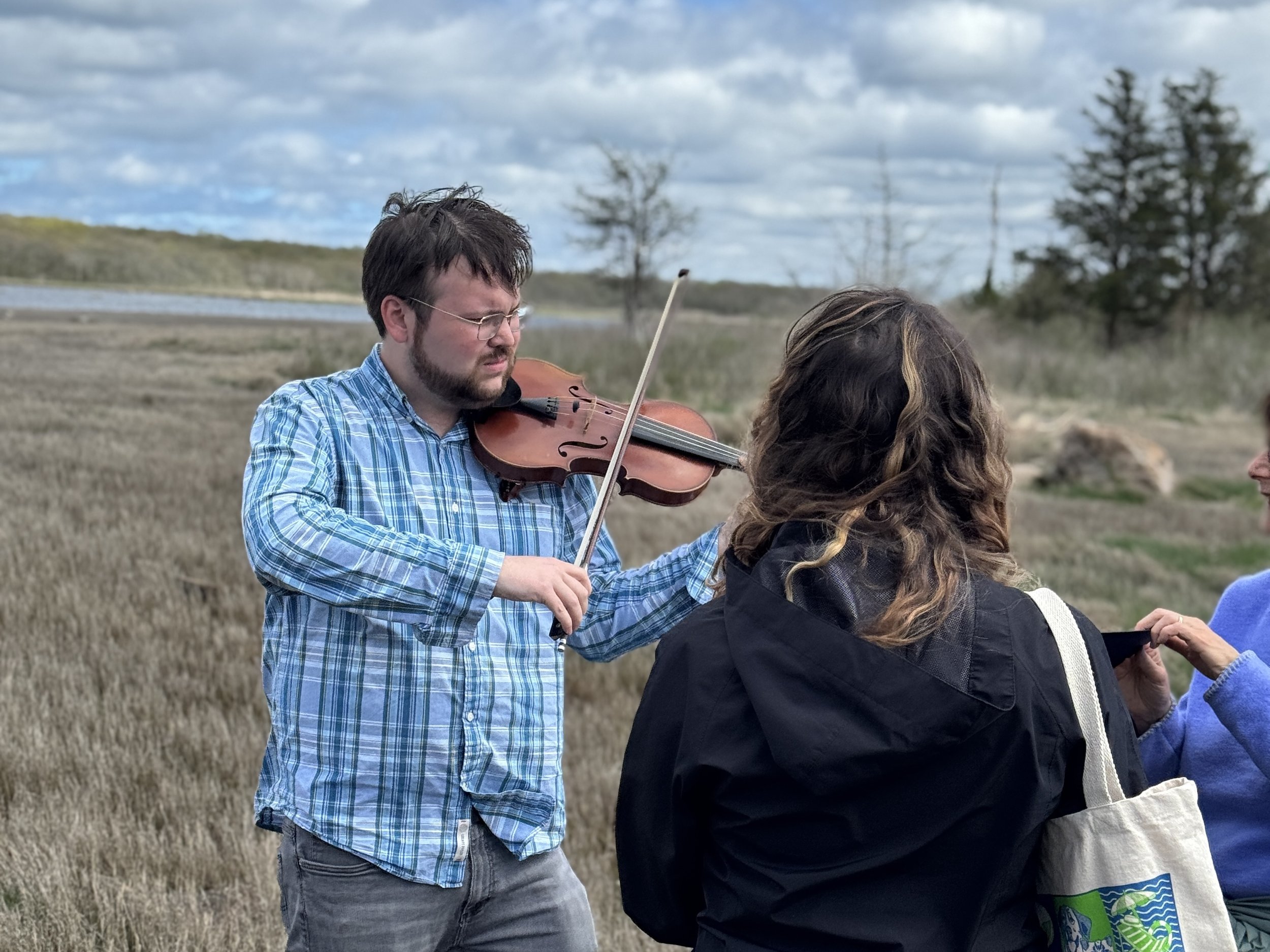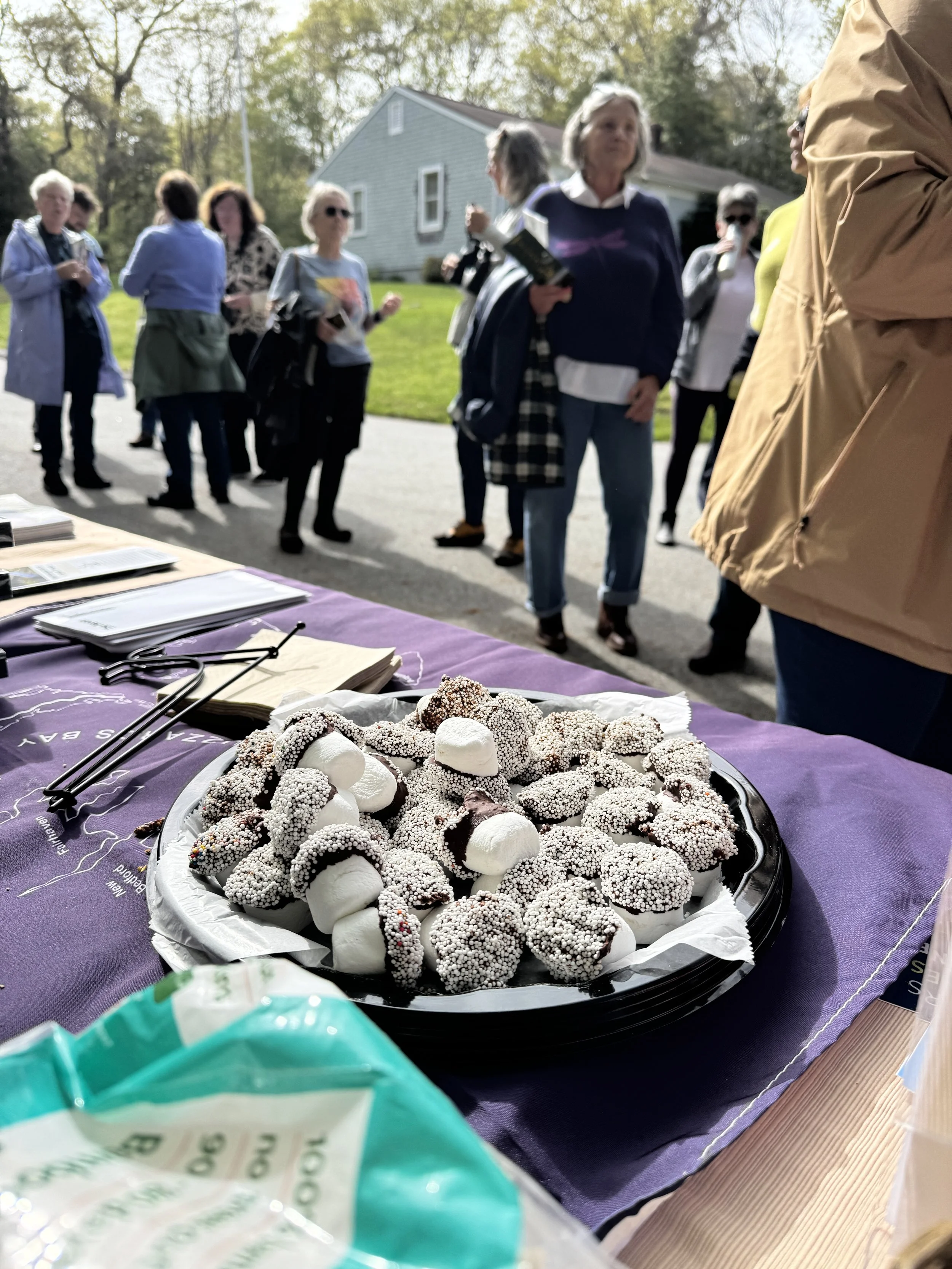Walking Book Tour: “Life and Death of the Salt Marsh”
Life and Death of a Salt Marsh | Authors: John and Mildred Teal | Walking Book Tour: Brandt Island Cove District - Whalers Way, Mattapoisett | May 12, 2025, 2-4pm
Display table for book, along with literature from the Mattapoisett Land Trust
Four to five times a year a large group of people—sometimes numbering close to 100 souls—gather together in a random area on the South Coast to hear someone—sometimes it’s the author—read passages from a book while intermittently walking through the wilds of the South Coast of Massachusetts and Rhode Island.
Known as the South Coast Almanac’s Walking Book Tour, I’m one of the co-leads, along with Marlissa Briggett, founder and publisher of the Almanac. For book nerds, fans of the South Coast, or lovers of curated experiences, this is luxury nerd nirvana.
Imagine the traditional book club—sedentary, indoors, comfortable—and re-imagine that, moved to the beach areas of Allen’s Neck. Or on the deck of the 35,000-ton South Dakota class battleship, Big Mamie. Or the mezzanine level of St. Anthony of Padua Parish on Acushnet Ave. Or by the unmarked graves of the Old Methodist Church cemetery in Little Compton. Or the Pacquachuck Inn on the Point that Herman Melville’s brother once owned. You get the point. These experiences are…unique.
The areas of the South Coast range from as far east as Onset to just beyond the border into Little Compton. And, technically, this usually means just Massachusetts. But sometimes we need to make exceptions because literary “regions” don’t respect state borders.
Locations are chosen with a book in mind, and just as important, with a walk of the book in mind. So when the book was “hardboiled detective fiction,” we re-imagined the South Coast in this way, and woo-lah! Fall River quickly presented itself as the perfect location for detective story cahoots. This was for local author Paull Goodchild’s The Case of the IPA. Another time the author, New York Times Bestselling author Dwyer Murphy, in his book The Stolen Coast, wrote about Onset in this genre. And so, we walked the book in Onset. But then there was Ruthless River: Love and Survival by Raft, by Holly Conklin FitzGerald, a book that took place in the Amazon rainforest. We choose Wareham. Go figure. And it worked! We did have to get a bit creative, as you can imagine. This meant we had to look at the South Coast in terms of finding turbulent waters. This led us to the Weweantic River Reserve at the Horseshoe Mill.
The first book we walked was in 2018. Blue Collars, by Catherine McLaughlin, was a work of fiction but based on the author’s life. The editor and publisher, Joe Thomas of Spinner Publications, grew up with Catherine and helped lead the book walk, transforming it into both a walk about the book, as well as the history of New Bedford.
One of the buildings still standing from the Berkshire Hathaway campus.
At one point the group was huddled together alongside Rodney French Boulevard on a somewhat-balmy-but-still-November overcast afternoon, looking at the old Berkshire Hathaway Mills complex. Joe’s been telling the stories of the South Coast since the early 80s. This included the stories of the Mills. During one of his visits there, a manager explained to him that the buildings containing the looms were engineered for the looms. My recounting of Joe’s presentation:
‘Come over here,’ the engineer asked Joe. Joe followed him to a wall. ‘Look down,’ the engineer instructed. Joe looked down. For the first time he noticed the floors were not connected to the walls but instead were…floating. This allowed for the vibration of the looms to not destroy the building. The entire building, Joe said with amazement, was engineered for the looms.
This was one of many unexpected historic add-ons to the walk that fortified the experience of reading the book, allowing us a model of seeking an additional layer of storytelling during our walks of the books.
Last month the 2025 season of the Tours launched with a walk in a salt marsh, and the book—Life and Death of the Salt Marsh, by John and Mildred Teal. Working with the Mattapoisett Land Trust, we were able to secure not only a prime location in the Brandt Island Cove District, but also have them involved to explain a little bit about the 900 acres of land they manage.
Vice President of the Mattapoisett Land Trust, Kristen McCormack.
Vice President Kristen McCormack was on hand to explain that the 167-acre area we were hiking into was “one of the most diverse” of their properties, including “salt marshes, woodlands, [and] vernal pools,” with the walk ending at a beach in a salt marsh. Kristen also introduced us to Oz, one of the local volunteers who has been maintaining the trails for 25 years. His passion and love for the trails was palpable as he shared highlights of this particular trail, including that there are several trees in the shape of horses that his grandkids love to “ride.”
Art Week South Coast was another partner of the Tour, helping to promote not only this Tour but over 50 other creative experiences.
The South Coast Almanac recently merged with Buzzards Bay Coalition, a merger built on their shared devotion to celebrating and protecting the region. The president of the Coalition, Mark Rasmussen, also wrote a forward. This pithy-albeit-deafening forward is critical, as it not only mentions the climate crisis—something the Teal’s wouldn’t have been able to address—it does so with a spotlight into the local impact specific to the waterways of the South Coast.
“By 2050,” Mark wrote, “Westport will lose 48% of its salt marshes, Dartmouth 30%, Bourne 28%, Marion 21%, and Mattapoisett and Falmouth 17% each.” This critical context lofts such a book into triage-levels of relevancy. And while there was a similar sense of urgency during the time the Teals were writing; after all, this was on the heels of Rachel Carson’s Silent Spring—the Teals approach to telling the story of the salt marsh reflects the diligent and exacting pacing typical of a poet, just as much as a scientist. Sensuous language evoking the bouquets, sounds, sights, and overall physicalities of the marshes, are part and parcel of the story. A sense of wonder is evoked throughout, with a Palmar touch of heartstring pull sure to leave the reader having to put the book down at least once to take a moment as the emotions well up.
In this way, it felt almost a sacred honor to involve one of the members of the New Bedford Symphony Orchestra, violinist Adam Jeffreys. The NBSO has developed a program called “Learning in Concert,” which involves over forty elementary schools, with over 8,000 students participating. Using the Orchestra as a heuristic to better understand our environment, they’ve tackled bird migration patterns, gravity, and in the case for our walk, “The Orchestra as Ecosystem.” And this is why Adam was waiting for us at the end of the trail with his priceless violin, ready to perform a Bach fugue.
Some of the group who turned out for the walk, ready to go mucking in the mud.
With many of us wearing foul weather gear—it was lightly drizzling when we started—we began the walk with a reading of a passage evoking the senses:
At low tide, the wind blowing across Spartina grass sounds like wind on the prairie. When the tide is in, the gentle music of moving water is added to the prairie rustle. There are sounds of birds living on the marshes. The marsh wren advertises his presence with a reedy call, even at night when most birds are still. The marsh hen, or clapper rail, calls in a loud, carrying cackle. You can hear the tiny, high-pitched rustling thunder of the herds of crabs moving through the grass as they flee before advancing feet or the more leisurely sound of movement they make on their daily migrations in search of food.
A snapshot of the path, replete with vernal pools.
And then we began what would become an almost-two-mile hike through a soggy-but-beautiful melange of wooded areas and marsh, studded with vernal pools that ensured the potential of mild acrobatic maneuvering or a return to the childhood practice of puddle jumping, albeit at a measured pace.
The next passage I read aloud was all about colors:
Late in the year, there are the yellow of the seaside goldenrod, a fleshy-leaved plant which has the flowers balanced above the stem rather than suspended from one side. From Virginia south, the sea oxeye, a low shrub with yellow sunflower-like blossoms, can be found. Purple thistle and sea pinks are able to grow in areas of low salt concentration.
The passage went on, but this gives you a feel for what the Teals were evoking. At one point, they point out the superiority of Gerardias that grow in a marsh versus in “bogs, fields, and forests,” because of the backdrop of the marsh, saying “none stand out like those blooming against the green background of the salt marsh.” This is such a lovely detail showing the care the Teals practiced in their storytelling, that describing the flowers wasn’t enough. The vistas and views were just as central to the storytelling, for they were salt marsh connoisseurs.
When the woods finally gave way to the open marsh, a lone music stand emerged, with a vast backdrop of swamp grasses, water, and treeline, punctuated by electric blue sky and the cotton-ball remnants of the system now in retreat. What a view!
Music stand in a salt marsh.
Marlissa read a final passage from the book. This involved a worthy-of-a-Disney movie story of the marsh wren. After this, Adam performed a Bach fugue, along with explaining the NBSO’s classroom series.
Marlissa Briggett, co-lead of the Tours, reading one of the passages.
At one point nesting ospreys took to the air, seemingly circling in concert to the Bach.
NBSO violinist Adam Jeffreys, playing a Bach fugue.
Before we returned, we knew there’d be a treat waiting for us. This is something that’s been part of the Tours since the beginning—the treat. And just like the Tours, they are locally-sourced and relevant to the book, somehow. For this walk, it was immediately clear we had to involve marshmallows, so we went with chocolate-covered marshmallows. They were jaw-droppingly scrumptious, along with being the perfect end to yet another amazing walk.
Chocolate-covered marshmallows from Forno Bakery in Wareham.
Our next Walking Book Tour is Sunday, July 20th, 2-4pm, at the Lloyd Center for the Environment, in Dartmouth. And the book: My Summer with Osprey: A Therapist's Journey Toward Hope, Community, and Healing Our Planet by Pamela Lowell
You don’t need to read the book to enjoy the walk. And the walks are free but RSVP so we know how many treats to bring! Hope to see you there!

